Today's sports industry offers a wide range of footwear solutions. However, we tend to forget the most important thing: running technique. I wrote an article on "running naturally" which was very successful. With almost 2 years' experience behind me, I'd like to add to that article. Indeed, over and above what manufacturers offer, it's really the way we run that's important and that will influence the shoes that suit us best.
Thinking about my articles while running, I've been testing the new Hoka One One Speedgoat for several weeks now. To me, wearing shoes with excessive cushioning was almost a heresy. It's no secret that I've been running in shoes with reduced drop and cushioning since I started running in 2012 (pretty much). For me, the Salomon S-Lab Sense is the perfect shoe for my foot and body type. I've never been injured, I've never had any bells and whistles and I've never been "stuck" because of these shoes.
It was unthinkable for me to think of wearing Hoka shoes (to name but one brand). Their extraordinary cushioning and the thickness of the sole would never satisfy me. I thought they were too stiff, too heavy ... I was still basically thinking that a month ago. Then came theOCC... During this race, my condition as a flat runner came back to haunt me... Although the Sense shoes were perfect throughout the race (no blisters, cramps or pain), I still told myself that wearing these shoes for 100, 120 or 170 kilometers might not be the right plan. Not everyone is Kilian!
Looking for a "comfort" alternative for my future "long" projects, I thought it would be foolish not to try other brands (especially as a blogger). So here I am, testing shoes that are the opposite of what I'm used to wearing, and my first outings inspired me to make a few comments on running technique:
Death to minimalism
Far from being the first to assert this, I've always avoided talking about "minimalism" in my articles, preferring the expressions "natural running" or "midfoot stride". In short, minimalism is, in my opinion, a dangerous reappropriation of manufacturers. In fact, most manufacturers have abandoned the term. But why? They've inferred the ability to offer running technique from the material. But, and this is obvious, a shoe won't give you a better stride.
The result of this marketing nomenclature was an incredible number of injured runners. These runners bought these shoes because of the marketing hype, without changing their running technique. Running with a drop and reduced cushioning, while continuing to heel, is indeed a heresy without a name.
In response to this problem, manufacturers developed a new terminology to try and stem the tide. Talking now of shoes that promote a natural stride, and even developing transitional shoes, they established the necessary and indispensable notion of progression when moving from a heel strike to a midfoot stride. The idea caught on, and the average runner began to evolve in transition plans to acquire the right stride.
The natural stride
I've already talked about it in detail here, but a reminder is in order. The natural stride or, as it should be called, the biomechanically correct stride, is the stride that everyone who wants to run should learn, even before extending the distance. Contrary to what many people still claim, the heel strike is not a biomechanically correct stride.
The natural or mid-foot stride is characterized by putting the front or middle of the foot first. The shock wave is reduced by the foot, which stores most of it. The calves and thighs pick up the rest of the shockwave and send it straight back to the foot as you push off. Not only does this technique act as a natural shock absorber, it also saves a considerable amount of energy by facilitating recovery.
In contrast, a heel-strike stride provides no cushioning and causes the shockwave to spread throughout the body. Try heeling barefoot, it's impossible. Why can't you? Because our heels aren't designed to absorb our weight! That's the role of our feet, calves, thighs, ischios and glutes.... The mid-foot stride does just that!
On this point, it's important to learn to master this technique regardless of the type of shoe you use. Learn to give your legs their role as shock absorbers and propellers. Naturally, you'll stand upright, reducing lumbar strain, and your body will move with greater flexibility and balance, reducing overall tension.
Biomechanically compatible" footwear
So-called "minimalist" shoes have caused quite a bit of damage. They're even getting bad press from some retailers. This is due to the marketing error I mentioned above. In fact, these shoes have one and only one function: to make the natural stride as "pure" as possible, to get closer to the sensation of running without shoes. To achieve this, they not only have a low drop and flexibility to facilitate specific foot movement , but also often little or no cushioning.
Today, we're witnessing the death of "minimalism" and that's just fine. It's out of fashion! In the early days of Hoka, "Maximalism" tried to make inroads into the terminology of running specialists. Fortunately, it didn't last long. It was seen as a point-by-point opposition to Minimalism, which is false and just as dangerous. In reality, as in many other fields, "ism" words should be avoided!
In fact, to take just the case of the Hoka One One Speedgoat that I'm testing as I write these lines, they feature a 5mm drop, a flexible sole and mesh for forefoot attack. A far cry from the opposite of the "minimalist" shoe.
It's now essential for every runner to talk in terms of biomechanical compatibility. Indeed, once you've adopted a natural or midfoot stride, the elements to take into account when choosing a shoe are fairly limited. These are the drop and the flexibility of the shoe. A low drop (below 8mm, and I'd personally say below 6mm) and flexibility in the midfoot allow the foot to move unhindered with a natural stride. Whatever the size of the sole, the lacing, the color, as long as your shoe allows your foot to bend at the metatarsal level without discomfort (and therefore with a reduced drop), you're looking at a biomechanically compatible shoe for the natural stride.
After that, it's a question of taste and preference. Do you want an ultra-dynamic shoe for short, dynamic trails? Turn to shoes formerly known as minimalist, i.e. with an extremely low or zero drop, an ultra-thin sole for extreme flexibility and no weight on your strides (Vibram Fivefingers, Inov 8, Salomon, Sense, Merrel, Brooks...). Do you want a comfortable shoe with which you can cover hundreds of kilometers and as many vertical drops, while minimizing the risk of fatigue-induced injury? Then look no further than Hoka, Altra and others.
New perspectives
The purpose of this article is to try and destroy all forms of sectarianism. All too often, I hear or read comments from runners who, like me, didn't want to hear anything other than "minimalist" shoes. Of course! If it's comfortable for you, don't change!
But don't forget to open up the field of possibilities by looking elsewhere. Personally, I know that my Sense shoes will remain my faithful companions for short and medium-distance, low-level trails. On the other hand, I'm thinking more and more of making Hoka my companions for medium-distance mountain and long-distance trails. Stay tuned for the Speedgoat test in a few weeks' time.

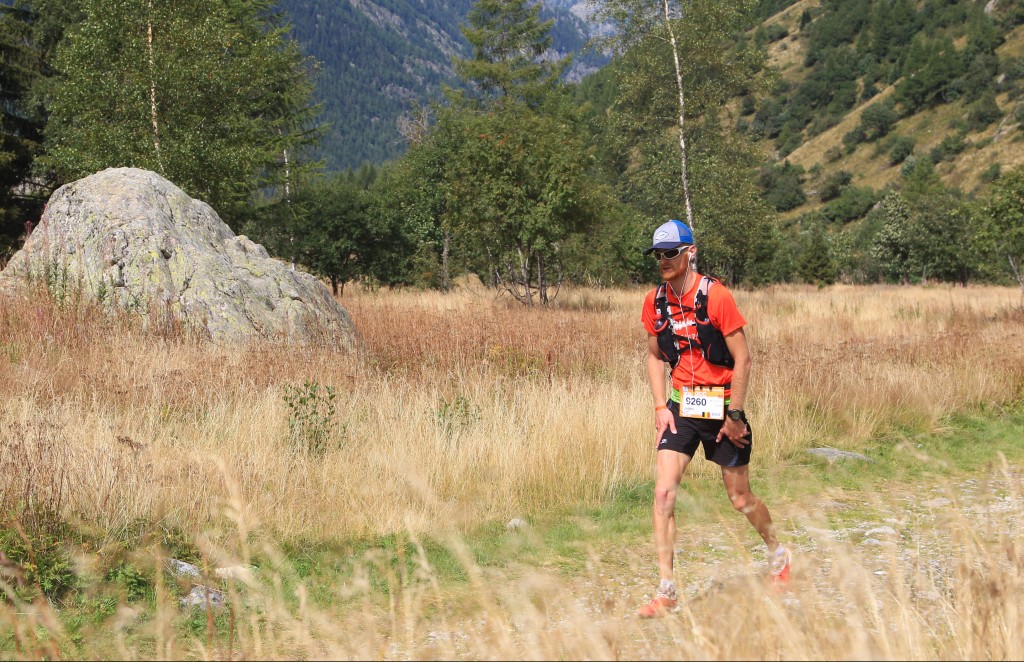
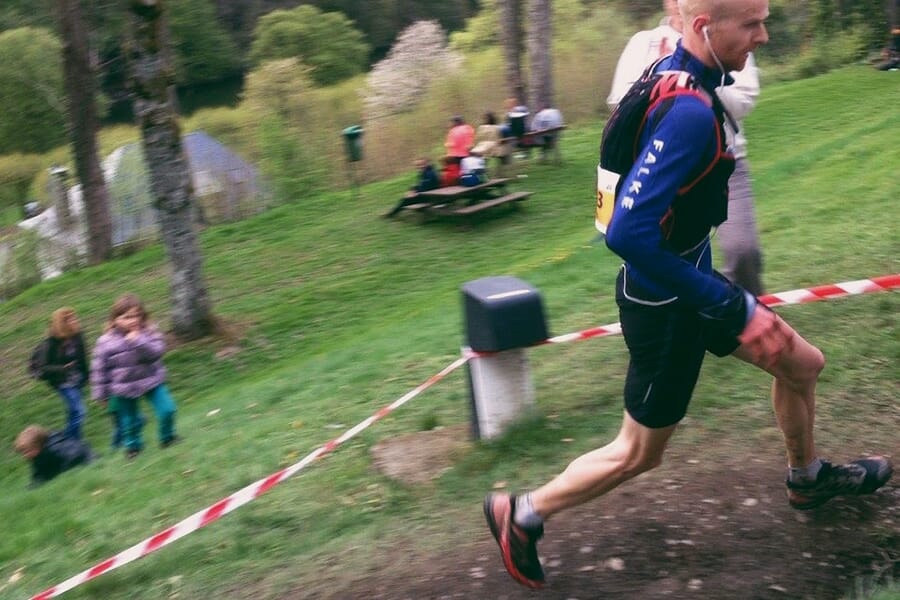
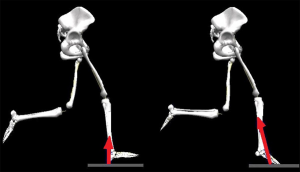
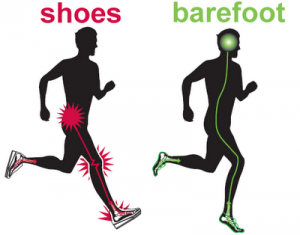
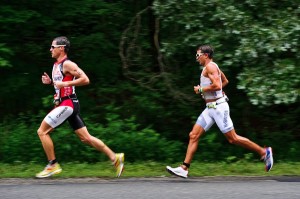
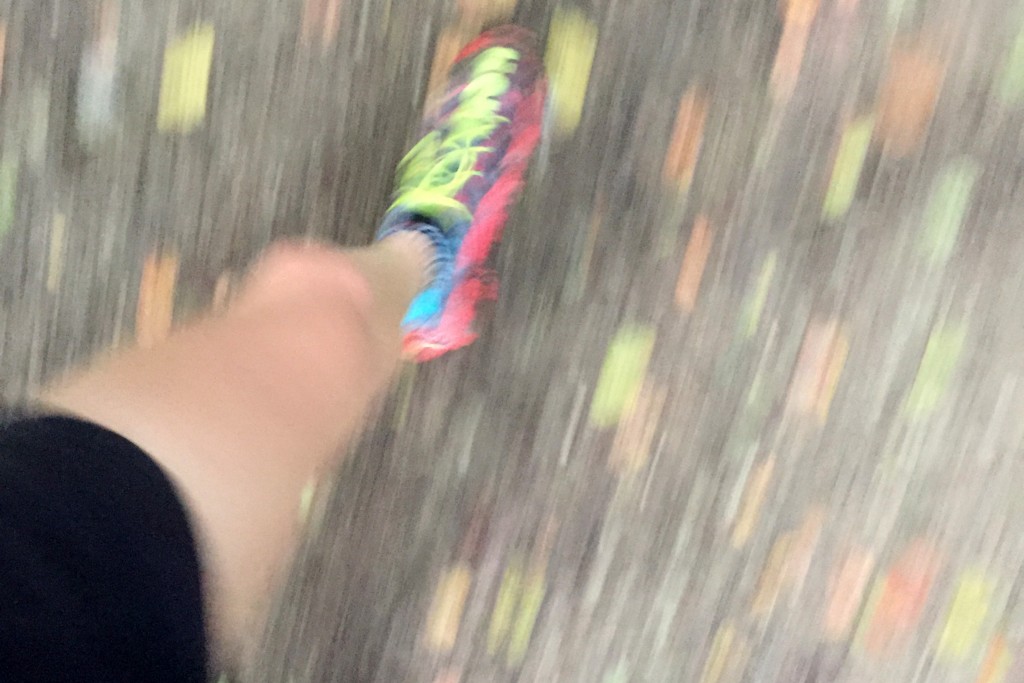



Very interesting article!
As an occasional runner, I'm wondering whether I should look into shoes that allow a natural stride. I'm still looking for a running technique that suits me. I sometimes have slight pain on the outside of my knee after a long distance run on hard ground. And I've got plenty of time to make a smooth transition to the natural stride!
Do you have any inexpensive shoes to recommend for this transition?
Yeah... It's all about training and gradually building up to long distances, running 100 miles after 3 years of practice, bof....
With good technique and a "hardened" body, you don't need any tricks, even if you do need a minimum, because unfortunately our feet have been over-protected since we were toddlers...
I never said you should skip steps! This article simply aims to open people's minds to the different possibilities offered by the sports industry. I'm simply saying that if shoes allow some people to finish without injury, why deprive themselves? After all, nothing can replace training 😉
Hello,
In more ways than one, I agree with your thoughts. Minimalism (zero drop, very little cushioning) from the US has had its day. Over there, people who have been injured have started to want to sue the brands they hold responsible for their problems. It's a bit of a shame, because I really enjoyed seeing Mizuno, New Balance and Saucony try their hand at zero-drop. VFF is still going strong, but it's a bit of a special case.
Personally, I feel I can take my midfoot stride with me on a wide range of shoe models. There are few that are anti-natural stride, contrary to what some people say. Of course, it's better if the shoe has the qualities you describe from the outset, with a sufficiently large toe box. Like you, it took me a while to get interested in Hoka and I discovered some really interesting sensations, particularly with the Challenger, which I happily wore on the Paris eco trail.
Nowadays, I like to alternate between them to vary the pleasures. One day I want to run flat with little material underfoot, and the next day I enjoy wearing my Hoka Valor.
Hello,
I join Philippe and also alternate pleasures and sensations according to my form and my desire of the day. I go from VFF to Salomon Sense to Nike Zoom Terra Kiger to Hoka Challenger... .
I do have one minor problem with the Hoka. Their oversized cushioning makes it easy for me after a few kilometres. I don't pay attention to my stride any more, because it's clear that with so much cushioning, you don't feel the ground at all: it's all smoothed out. So now I use the Hoka to run fast and (I confess) any way I can at the end of a race to achieve a result... not very proud of it, but hey... .
To echo this article, I think it's difficult to learn and maintain good running technique using only Hoka shoes... they mask the sensations far too much.
In my opinion: use sparingly!
I also think diversity is essential. Don't let your foot get used to one shoe. Another important element, in my opinion, is the ability of the abs to hold the posture for a long time. This will make it all the easier to maintain a midfoot attack over time. On the other hand, unlike Philippe, I'm looking for a fitted forefoot shoe.
As you can imagine, I couldn't agree more with every word you said! Thank you for your feedback!
These little diagrams on the biomechanical stride clicked when I saw them on your article last time. It's good to see them again. I'm paying more and more attention to my stride and I'm noticing that when I'm in good shape, I naturally attack from the front of the foot, whereas when I'm tired the tendency is reversed... So it's something to work on!
It's certainly something to work on, but like everything else, it's a question of training. Even I, who've never run anything but this way, found myself heeling on the last few runs of the OCC ;). Bonne continuation à toi! Congratulations on your blog, it's great to read!
Thank you so much! I took the liberty of putting a link to yours in my favorite blogs 🙂
Thanks to you, I just did the same with my new Blogroll 😉
Hello, your article is very interesting, I'm currently thinking about my future purchase of new running shoes, I've just realized that I only have shoes with an 8 to 10 mm drop, and for almost 1 year I've been suffering from all kinds of injuries, I say injuries because they don't prevent me from running but they still slow me down in my goals and I don't dare push too hard for fear of waking up my tfl syndrome for example due to my bowed legs.
I'd really like to try drops of less than 6 mm, which seem to be effective on quite a few people, and to learn to run more naturally (I have a Talon attack) with Hoka or Saucony Zealots, but they're so expensive that I'm afraid to take the plunge, even though I'd do anything to run with zero pain.
What do you think of this drop/injury relationship, do you really think that reducing the drop (and by necessity modifying your stride) can reduce the risk of injury?
Thanks for your answer, Jenn.
I think the first thing is to check that you have the right running technique. Then, if you're telling me that you've got bow legs causing the TFL problem, it's more than necessary to go and see a podiatrist to try and sort out the problem. It's only once you're "straight" again that the option of shoes can be considered. Don't hesitate to keep me informed.
Julien
Thank you for your reply, I already have insoles, they were priais for 8 months then came back knee problems, so they were changed just yesterday.
I hope everything will be back to normal soon.
To be continued.
Thanks again.
Hello,
I really like your article which dissociates running technique and shoes.
I made the transition from a heel strike to a forefoot-mid strike because of knee problems. Having read up on the internet, I acquired semi-minimalists since the information was only relayed by pro-minimalists. They have appropriated "the mechanically correct organic stride" when everyone should be learning it, just like in athletics.
I think it's a pity that the marketing of all brands idealizes the heel attack and the rolling of the whole foot.
Your transition is interesting. I have a question, do these shoes change your stride rate?
Thank you, Xavier
Hello Xavier!
First of all, thank you for your message. You've perfectly understood what I was trying to say, namely that running technique and footwear must be clearly understood. It's important that the shoe doesn't get in the way of the technique, but after that consideration, it's up to each individual to find ... the right shoe.
Concerning stride cadence, it's the stride and not the shoe that determines it, so minimalist shoe or not, your cadence, if you run with a biomechanically correct stride, will be around 180 steps per minute.
Kind regards,
Julien
Very interesting article, I am also attracted to Hoka on the long.
Running on Inov8, is it easy to switch between Minimalism and Oversize?
Can I switch from one training session to another with the 2 types of shoes without worry?
Thank you for your feedback.
Sportivement,
Laurent
Hello, coming from a minimalist shoe, the transition to oversize shoes is easy. However, the opposite is not the case. Personally, I go from one to the other without a problem, depending on the type of training. I even think it's a good idea to keep different types of shoe so that our bodies don't get used to one or the other.
Best regards,
Julien
I also regularly change my running shoes to get my feet used to them.
Is it easy to get used to the Speedgoat or is there another pair that would be more suitable?
I'm 1m74 for 66kg so I'm not a heavy runner 🙂
Thanks for your feedback.
Laurent
Like all shoes, you get used to them quickly, but you need time to get used to them. This isn't a minimalist shoe that bends at the drop of a hat, but I'd say it's clearly adapted to your profile. Sincerely
Hello everyone,
I'm often injured (various tendonitises, minor sprains, etc.) and people are always talking to me about learning to run as a minimalist. But there's a simple question that keeps popping into my head, to which I've yet to find a concrete, detailed answer.
How can I learn to run as a minimalist?
Thank you.
Paul
Hello Paul,
I think this article has probably already helped you see things more clearly.
Basically, and to caricaturize, natural running means running on the front or middle of the foot.
To learn this technique, I recommend you run barefoot on a hard surface for a few hundred meters.
I can assure you that you will then adopt the right technique ;).
It's a gradual process. Don't go too fast to avoid injury, as your body (especially your calves) needs to get used to the strain.
I hope this helps.
Don't hesitate to ask any questions you may have.
Julien
[...] The Hoka One One Speed Instinct are Hoka's new trail bombs. Following in the footsteps of the new Tracer (designed for the road), the Hoka One One Speed Instinct are a clear departure from the brand's traditional "oversize" range. In fact, the sole thickness is within the norm, at 20mm on the forefoot and 23mm on the rear. As you can see, the drop is 3mm! This means that the shoe is clearly adapted to the natural stride. [...]
[...] and the flexibility of the sole, this shoe will give the best of itself with a natural stride. Nevertheless, despite the slimming of the sole, the cushioning typical of [...] is still there.
Hello,
I've just discovered your blog, thanks to Matthieu Peltier's advice (we met at the end of the Trail de l'Orneau on Sunday). Very interesting! Very interesting! We should even go running together one of these days, just to delve into certain aspects that interest me... 😉
For my part, I've made a rather special transition to minimalism/natural running. I stopped running for over 10 years, following a repeated knee injury. I turned to mountain biking.
Due to a lack of time, and after reading the book "Born to Run", I decided to start running at the end of 2013... barefoot. So I did a lot of reading (including Barefoot Ken Bob's excellent book: Barefoot Running Step by Step.
Thanks to my reading, and the fact that I was starting from scratch, I was able to make a long and successful transition. Just 2 years ago, I ran the Brussels half-marathon barefoot, in 1h50.
Then I switched to shoes, because I was attracted by trail running (and all those rocky paths, they really hurt your feet! ;-)). So I bought Luna Sandals, then Merrell Trail Glove and Road Glove (drop 0). Then, following pain in my achilles tendon, I was advised to add a slight drop to put less strain on the tendon. So I bought Brooks Puregrit (drop 4).
So I made a reverse transition: from barefoot to shoes with drop! On the other hand, barefoot running taught me the natural stride, which I've kept ever since and which I'm fine-tuning as I go along (as far as reading is concerned, I recommend "Courir léger" by Solarberg Séhel).
I'm convinced that the natural stride is the solution to many problems. There are many different ways of getting there, but barefoot running helps a lot (you can't run for miles barefoot!). Patience is the hardest part, especially for runners who don't want to reduce their running volume!
Since then, I'm still with my Brooks, but I'm eyeing the Salomon S-Lab Sense... I'm also looking for a good shoe for next year's Mont-Blanc Marathon (if I'm drawn ;-))...
To be continued!
Hello,
Minimalism is running with a minimum of distance between you and the ground. 13mm of cushioning and 4mm of drop in "supportive" shoes is not minimalism.
While it's possible to have a correct midfoot stride in any type of shoe, it's not possible to have a heel strike in a minimalist shoe, or in barefoot.
What's the difference between barefoot and minimalist shoes? A thin sole to keep your feet pink and help you run over small stones, that's all.
But you're wrong to think that shoes can't change your stride. I can prove it to you very simply: take them off and get back to running! (with care, okay?)
It's because of the cushioning in our shoes that almost all of us run with our heel first, which is unnatural. Watch a young child run - it's very instructive!
Incidentally, the easiest way to regain a midfoot stride is to run barefoot, or minimalist.
For your information, minimalist injuries are mainly due to 2 causes:
- First and foremost, "too much, too soon", which means underestimating the transition to a natural stride.
- Secondly, shoes that "tend towards minimalism" and offer reduced cushioning, not enough to modify the stride, but too much to compensate for the work your body isn't doing. These shoes have wreaked havoc with runners who didn't have the right technique! Or how to attack from the heel without cushioning...
Yannick Dewael's commentary is very interesting: we most often change our stride to relieve our knees, we run minimally because barefoot can sting (!) and the cushioning of shoes is replaced by calf work via the Achilles tendon. If we add Born to run and light running, we're only left with the La Clinique du Coureur website for scientific proof.
Olivier
I'm just going to quote my article and make a clarification:
- "Far from being the first to assert this, I've always shied away from talking about "minimalism" in my articles, preferring instead the expressions "natural running" or "midfoot stride". In short, minimalism is, in my opinion, a dangerous reappropriation of manufacturers."
- Well, I run exactly the same way barefoot or with Hoka shoes. Why? Because I have a midfoot stride and not shoes that are this or that... I've just taken part in a study on the "natural" stride. I'll send you the video if you don't believe me ;).
- "Running in drop and reduced cushioning while continuing to heel is effectively heresy without a name."
- So-called "minimalist" shoes have caused quite a bit of damage. They're even getting bad press from some retailers. This is due to the marketing error I mentioned above. In fact, these shoes have one and only one function: to make the natural stride as "pure" as possible, to get closer to the sensation of running without shoes. To achieve this, they not only have a reduced drop and flexibility to facilitate specific foot movement, but also often little or no cushioning."
- "No matter the size of the sole, the lacing, the color, as long as your shoe allows your foot to bend at the metatarsals without discomfort (and therefore with a reduced drop), you're looking at a biomechanically compatible shoe for the natural stride."
In any case, I absolutely cannot agree with this statement: "But you're wrong to think that shoes can't change your stride. I can prove it to you very simply: take them off and get back to running! (with care, okay?)"
I kind of expected this answer, since you already have a mid-foot stride, so I had planned the opposite demonstration: Everyone runs mid-foot... until they put on shoes! It's in this sense that shoes modify our stride. And barefoot - or minimalism - allows us to return to a natural way of running. So I repeat that shoes modify our stride.
I'm probably speaking in generalities when you tell me about your personal case, which may explain our divergence.
However, I notice maliciously that you change your shoes according to the distance you run. This is common, as the midfoot stride degrades with fatigue, and cushioning allows you to compensate a little... which is not possible with minimalists.
No impact on shoes, you say? 😉
In fact, as I reread your comment, I was leaving for my training session yesterday.
I don't understand why you're commenting on my article. All you're doing is paraphrasing what I say in it and in this one(https://www.sentiersduphoenix.be/courir-au-naturel/).
In fact, you say: "But you're wrong to think that shoes can't change your stride. I can prove it to you very simply: take them off and get back to running! (with care, okay?)". But in fact, at no point in my article (written over a year ago) do I say that ^^.
In short, I told you yesterday in a rush that a shoe can't change your stride. Of course, it can. As you say, it can prevent you from having the right stride. I agree. On the other hand, someone who heel-strikes with any type of shoe (it exists) will never be able to acquire a mid-foot stride thanks to a shoe. He'll need to learn and make the necessary transition. The shoe won't impose the right stride.
The second point on which I disagree. Yes, I change my shoes depending on the distance. No, it's not because my stride changes (look at the pictures of my arrival at the OCC), it's because I appreciate a little more comfort under the metatarsals. Which, as you say, is not contrary to a biomechanically compatible shoe.
In fact, I invite you to take a look at the Topo Athletic brand created by Tony Post (the "guru" of American minimalism). Do you know what these shoes are? 3mm drop shoes with nearly 15mm of material underfoot ^^ Why? Because natural runners needed more protection under the foot without having any impediment to their movement...
Anyway, this is my last comment. I'm sure you'll find plenty of arguments to contradict me 😉
Hello,
To conclude this debate, I invite you to research the shoe minimalism index, a value created by professionals specializing in health and sport.
It appears that above a certain threshold of shoe minimalism, runners increase their stride rate and no longer attack with their heel. Clearly, if you opt for sufficiently minimalist shoes, you will no longer have the stride of a runner-walker.
Where we completely agree is in the danger of an in-between, with shoes that are neither minimalist nor maximalist enough.
I'm therefore commenting on your post, to reaffirm that the easiest way to regain a natural stride is barefoot and minimalism, which we're perhaps a little too quick to bury.
Clearly, you're only drawing your conclusions from your own personal experience, and I'm worried that the generalities you deduce from it will engender false beliefs in your readers.
Yet I agree with almost everything you've written. Almost 😉
Have a nice day
Hello,
Thank you for your article, it's reassuring to see that other people have the same experience.
Personally, I switched to Altra and was blown away by the comfort and dynamism of their shoes. They combine zero drop, which, once understood, allows you to take full advantage of your natural stride, with cushioning (more or less pronounced depending on the model) which means you don't feel too violent on long runs. Of course, they also feature an oversized toe box that's both comfortable and high-performance.
If I wanted to, I could attack the heel with my Altra and the problem would still be the same. As far as I'm concerned, zero-drop or downright minimalist shoes only serve to take advantage of the natural stride and possibly encourage it (mechanically, when you go from 15mm drop to 0mm, it changes your running habits / same principle when you go from 25mm to 3mm cushioning!)
Having said that, since I changed shoes, even though I was already attacking midfoot / forefoot, I was more prone to back pain than I am now, and I think these shoes have helped me to re-align and find a mechanically better posture. I'm not even talking about my performance, which has taken a leap forward (no pun intended).
Anyway, great article, neutral and intelligent, without bias, without hasty conclusion, in short a nice reflection.
Have a nice trip!
I agree with a lot of what you say, but I'll agree with Olivier CHINER's comment on one point: switching to shoes incorporating foot-relief technologies will necessarily have an impact on the way you run, which doesn't mean you'll go back to heeling!
If shoes that "tend" towards minimalism, such as VFF or Merrell, help to maintain a "correct" stride, they also have another very interesting property. They allow you to feel the aches and pains that come when you "pull" too hard on the machine.
If your body really starts to suffer after 50 km of trail running, maybe it's just not a good idea to continue (my opinion only).
In fact, the stride is only part of the problem, and I'll use my own case as an example. It's rather special because, unlike many runners, I really learned how to run. As a youngster, I did 10 years of track in an athletics club (1000 M then 800 M plus cross-country in spiked shoes!). So I already had a "relatively good" stride, which I'd acquired through a lot of range sessions and reinforcement in the stands, among other things :).
Despite this, switching to "minimalist" shoes helped me realize when I was pulling too hard on the string, as the sensations were more "cash" than with drop and cushioned shoes. As I train a lot by feel, this kind of feedback is invaluable.
These gains aren't entirely due to the shoes, of course, but it helps a lot.